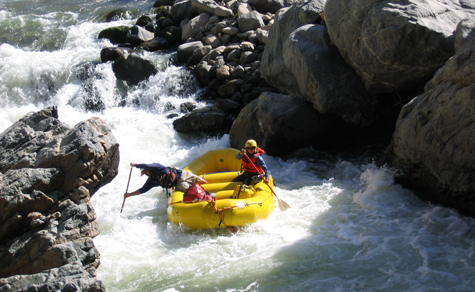| Uplift History of the Cordillera Occidental, Southern Peru, from Canyon Geomorphology |
  |
Project Summary
Personnel: Taylor Schildgen (Ph.D.) Katrina Cornell (M.S.) Kip Hodges (Ph.D.) MIT researchers are studying the uplift history of the Cordillera Occidental of southern Peru, which marks the western boundary of the Altiplano plateau in the central Andes. Their approach is to study the spatial and temporal history of incision of two major river systems (the Colca and Cotahuasi river systems) that transect the range through what are regarded as the two deepest canyons in the Western Hemisphere, each with a total relief in excess of 3200m. Although river incision is an imperfect proxy for rock uplift, the behavior of major river systems during tectonic activity is a sensitive indicator of surface uplift relative to sea level. This is true regardless of whether or not steady-state conditions have been met. The geology and geography of these drainages provide four independent ways to estimate the history and pattern of river incision. This circumstance provides an extraordinary opportunity to develop a detailed image of the incision history of the Colca and Cotahuasi river systems, which the MIT researchers are using to deduce the uplift evolution of the western edge of the Altiplano, and to test the implicit assumptions in standard applications of each of the four methods. The MIT researchers are using a combination of the following four methods to decipher the history and pattern of river incision: 1) thermochronologic studies of incised granitic plutons; 2) reconstructions of ancient land surfaces based on preserved remnants of volcanic flows; 3) measurements of the time-integrated rate of river incision using bedrock strath terraces; and 4) reconstructions of the history of valley aggradation and subsequent re-excavation recorded in alluvial fill terraces and remnants of volcanic infills. The information being gleaned from these studies about the incision histories of the Colca and Cotahuasi river systems is essential for evaluating current models of the growth and uplift of the Andes, and for better informing future models. |